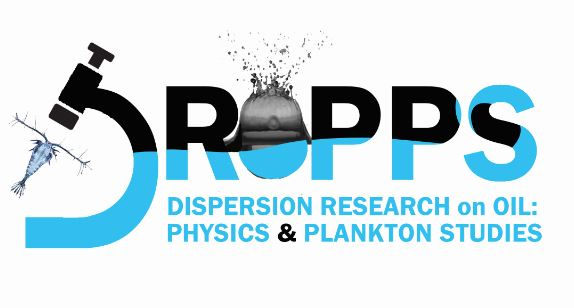Scientists conducted laboratory experiments to learn more about particle emissions when bubbles on an oil slick burst. They observed that bubbles bursting on slicks containing crude oil and dispersant mixtures aerosolize micro-sized droplets (diameter is one thousandth of a millimeter) and nano-sized droplets (diameter is one billionth of a meter). In ambient air, there is a tenfold increase in the concentration of submicron-sized droplets (<one millionth of a meter) when large bubbles (>500 μm) burst on slicks containing dispersants. These results suggest that the presence of dispersant may enhance the concentration of nano-sized droplets containing oil above a slick. The concentration of nano-sized droplets may increase by an order of magnitude in air containing ambient nanoparticles, which commonly occurs in the oceanic environment. Extremely high concentrations of ambient nanoparticles may occur when there is in situ burning of oil.
The researchers reported their findings in the Journal of Geophysical Research Atmospheres: Aerosolization of Crude Oil-Dispersant Slicks Due to Bubble Bursting.
Oil spills can affect air quality through the emission of particulate matter and volatile organic compounds (VOCs) to the atmosphere. Exposure to VOCs have been linked to headaches, eye irritation, and changes in blood profiles and liver enzymes. Chemical dispersants are often used in oil spill response to breakup oil patches into small droplets, enhance their dispersion in the ocean, and lower human health risks. However, recent findings indicate that there may be an increase in oily aerosols when chemical dispersants are applied to surface slicks (Study Finds Dispersants Reduce VOC Emissions and Increase Airborne Particles with PAHs and Study: Dispersant Increases Oil Compounds Entering Atmosphere via Bursting Bubbles).
This study team sought to improve calculations of the number and mass of aerosol generated per bubble, which is helpful for predicting air contamination. They injected bubbles (small 86 μm, medium 178 μm, and large 595 μm) into a chamber column filled with seawater and topped with crude oil, dispersant, and an oil+dispersant mixture (1:25 dispersant to oil ratio). They analyzed air and particulates collected from filters sampling the particles and confirmed the presence of airborne oil above the slicks. The team monitored the size distributions of aerosolized drops (ranging from 0.5‐ to 20‐μm and 10‐ to 380‐nm) in clean and ambient air environments.
The authors noted that submicron aerosols could be transported over intercontinental distances and are small enough to penetrate the tiny air sacs in lungs. They believe that a reason why only large bubbles cause the increase in nanoscale droplets is tied to a difference in the bursting process for film droplets (formed at the bubble cap) versus jet droplets (formed at the bubble base).
Data for this study is available at the Gulf of Mexico Research Initiative Information & Data Cooperative (GRIIDC) at DOI 10.7266/N77H1GZG.



